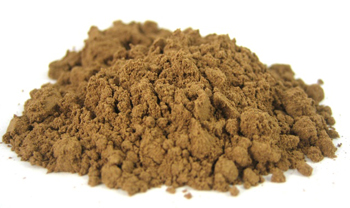Contents:
Common Names | Parts Usually Used | Plant(s) & Culture | Where Found | Medicinal Properties
Legends, Myths and Stories | Uses | Formulas or Dosages | Resource Links | Bibliography
Scientific Names

Allspice |
- Pimenta officinalis L.
- Myrtle family
Common Names
- Clove pepper
- Jamaica pepper
- Pimento
Parts Usually Used
Fruit
Back to Top
Description of Plant(s) and Culture

Allspice Berries |
Allspice is the dried berry of the pimento, an evergreen tree growing to 40 feet in height; it bears opposite, leathery, oblong to oblong-lanceolate leaves whose pinnately arranged veins show prominently on the underside. Small white flowers grow in many-flowered cymes in the upper leaf axils from June to August. The fruit is a fleshy, sweet berry which is purplish-black when ripe. The berries used for allspice are collected when they have reached full size but are not yet ripe. The name comes from the berry’s taste, which has been described as a combination of cloves, Juniper berries, cinnamon, and pepper.
Back to Top
Where Found
Grows in the West Indies, South America, Central America, and Mexico.
Back to Top
Medicinal Properties
Aromatic, carminative, stimulant
Back to Top
Legends, Myths and Stories

Ground Allspice |
Allspice tastes like a blend of cloves, cinnamon, and nutmeg, but is actually a single spice ground from the under-ripe dried berry of a tropical, evergreen myrtle tree, native to the West Indies and Central America. Smith’s Dictionary of Economic Plants states: “In Jamaica the berries are highly spoken of as a substitute for tobacco, being odoriferous, but they require a long pipe to smoke them, when they afford a treat unknown in smoking tobacco.”
Back to Top
Uses
Pimento water and oil of pimento are helpful for flatulent indigestion or simple flatulence; the oil is used for hysteria. Taken with a laxative, the oil lessens the tendency toward griping.. As an ointment or a bath additive, allspice is said to have some anesthetic effects. Also used for rheumatism and neuralgia.
Back to Top
Formulas or Dosages
Pimento water: combine
Oil: a dose is from
take
Powder: a dose is from
Plaster: boil crushed berries in water until the mixture is thick enough to spread on a linen cloth.
Back to Top
Resource Links
Herbs That are More Effective in Treating Lyme Than Antibiotics
Back to Top
Bibliography
![]() The Herb Book
The Herb Book, by John Lust, Bantam Books, 666 Fifth Avenue, New York, NY. copyright 1974.
![]() The Herbalist Almanac
The Herbalist Almanac, by Clarence Meyer, Meyerbooks, publisher, PO Box 427, Glenwood, Illinois 60425, copyright 1988, fifth printing, 1994
![]() Eastern/Central Medicinal Plants
Eastern/Central Medicinal Plants, by Steven Foster and James A. Duke., Houghton Mifflin Company, 215 Park Avenue South, New York, NY 10000
![]() Planetary Herbology
Planetary Herbology, by Michael Tierra, C.A., N.D., O.M.D., Lotus Press, PO Box 325, Twin Lakes. WI 53181., Copyright 1988, published 1992
![]() Webster’s New World Dictionary
Webster’s New World Dictionary, Third College Edition, Victoria Neufeldt, Editor in Chief, New World Dictionaries: A Division of Simon & Schuster, Inc., 15 Columbus Circle, New York, NY 10023
 Old Ways Rediscovered
Old Ways Rediscovered, by Clarence Meyer, Meyerbooks, publisher, PO Box 427, Glenwood, Illinois 60425, published from 1954, print 1988
 The Rodale Herb Book: How to Use, Grow, and Buy Nature’s Miracle Plants (An Organic gardening and farming book)
The Rodale Herb Book: How to Use, Grow, and Buy Nature’s Miracle Plants (An Organic gardening and farming book), edited by William H. Hylton, Rodale Press, Inc. Emmaus, PA, 18049., 1974
